TenSpot: Top Ten Rhythm Games
The GameSpot editors get gully with the first new TenSpot: Top Ten Rhythm Games. Countdown with us as we recall our favorites and then vote for your own in our Readers' Choice TenSpot poll.
Let the Rhythm Hit 'Em.
Though rhythm games arguably had their heyday 5 to 10 years ago, recent releases have shown us that the genre has still got it, and it continues to improve every step of the way. We now take a look back at the top 10 rhythm games of all time, leaving no platform unturned and letting no region-encoding stand in our way. As with every TenSpot, the games listed aren't in any particular order, so don't go reading between the lines, thinking we've ranked them. All of these games stand as equals in their collective greatness.
So what is a rhythm game? The following are specifically classed because of their singular focus on building gameplay entirely around rhythmically generated puzzles. So while games like Rez require attention to rhythm, it's almost as much of a shooter as it is a rhythm game. And while a game like Lumines has a great sense of time incorporated into its mechanics, it's more of a puzzle game than anything else.
Some of these rhythm games never made it outside of Japan, and others require you to purchase an expensive peripheral controller, but all of the greatest rhythm games are characterized by a few elements--a noteworthy soundtrack, a unique method of interaction, and an addictive gameplay. To be truly great, the game can be responsible for pioneering the genre or merely perfecting the established formula, and whether you're using your feet, hands, or stylus to map out the beat, we guarantee that in the following 10 games, the rhythm is going to get you.
Have we done a major injustice? Left off a rhythm game that you absolutely loved to death? You've got a chance at the end of this feature to vote on your favorite rhythm game. We'll revisit the issue later in a reader's choice edition of TenSpot, where we'll tally the votes, see what you have to say, and publish your version of the list.
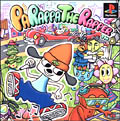
It's the rarest kind of game that busts out onto the scene with its own, bold idea executed to near-perfection, and PaRappa the Rapper is a distinctive example of this. After all, before PaRappa, rhythm games simply didn't exist. So this unforgettably original PS classic opened a lot of people's eyes, but more than that, it just made us smile. PaRappa's fantastic presentation and simple, addictive gameplay allow it to easily earn its way onto our list of top 10 rhythm games of all time.
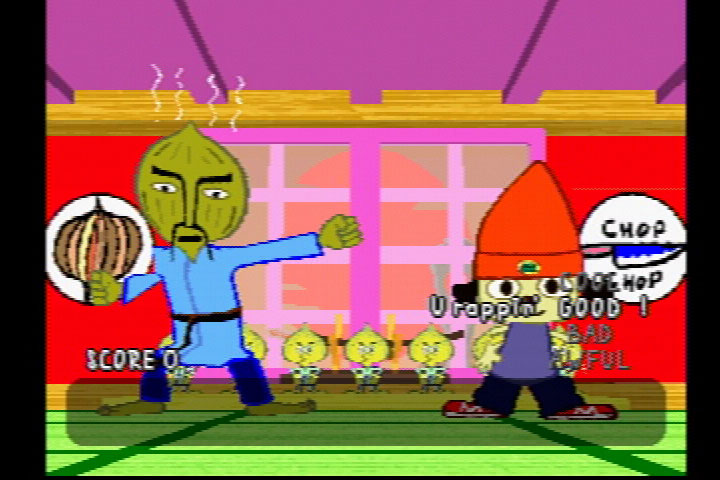
In particular, what PaRappa did so well, which so few rhythm games (or really any games) have successfully done since, was to tell a story. The game's bold visual style predated South Park's similarly colorful cardboard-cutout look--filled with charm, personality, and a little edge. You played as PaRappa himself, a down-on-his-luck mutt who's got a bad crush on a girl named Sunny. Of course, she doesn't even know PaRappa exists--what's a little dog to do? "I gotta believe," PaRappa tells himself, and thusly sets off on a quest to bone up on his fighting skills, learn to drive, make money...you know, do all the stuff that's going to make Sunny notice him. In practice, these various ordeals translate into a series of stages in which PaRappa must rap to the beat of a variety of different drummers--from an encouraging, onion-headed karate sensei to a temperamental moose-lady.
The gameplay itself is more or less exactly what you'd expect from a rhythm game--after all, PaRappa did define the genre. You must hit the corresponding button on the controller precisely as it scrolls past the screen, thus causing PaRappa to keep beat with his trainer/opponent and proceed. Messing up the timing, or pressing the wrong button, leads to amusing results, but if you make too many mistakes, you'll fail your mission and need to start over. Memorization is key, and PaRappa's catchy, original rap beats and music-video-style presentation lent themselves very well to repeat viewings and listenings. The game's climactic freestyle-rap-concert finale, featuring a lone PaRappa having to groove to his own rhythms, even helped give the game a little open-ended replay value.
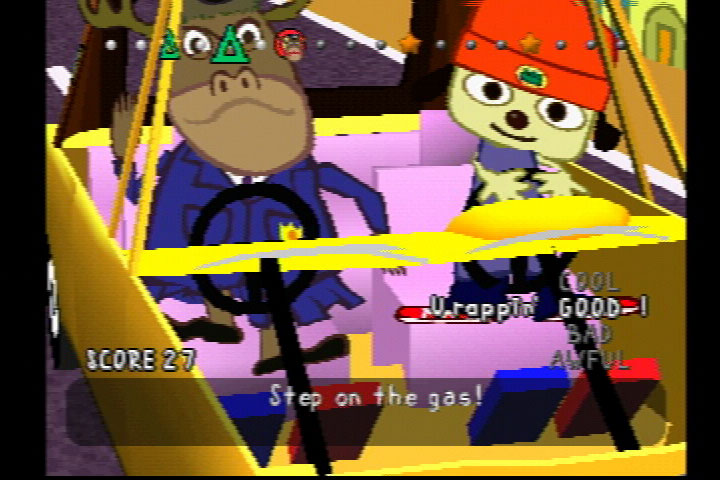
The music in PaRappa the Rapper deserves further recognition since it remains as one of the only rhythm games with a completely original soundtrack. Though the main character is decked out with a low-fitted beanie befitting a teenaged rap enthusiast, the game's tone is upbeat, lively, and suitable for all ages--a real departure from the adult themes that typify most rap. And yet, this game is far from being just for kids. In what's probably the most hilarious stage, PaRappa is stuck waiting in line at a public restroom, and he must use his rap skills to desperately try to cut ahead of those who are impatiently stuck ahead of him. Not only is it funny, but it's surprisingly tense. PaRappa the Rapper is a completely nonviolent game, but it makes you realize that real-world situations abstracted into silly cartoon rap battles can still make for the sorts of memorable drama and action we normally associate with action games.
PaRappa the Rapper isn't long, but we still remember it vividly nearly a decade after its release. It's one of the PS's defining games. It featured a true multimedia presentation, only made possible by the CD-ROM's ability to stream music with vocals and pack in lots of 3D animated graphics. And it was just a uniquely quirky, fun game that proved how challenging simply trying to keep pace with onscreen button commands could be.
--Greg Kasavin, Executive Editor
Do You Believe? Submit a Review of PaRappa the Rapper!
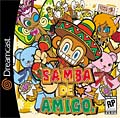
The rhythm game genre was basically a one-publisher show back in 1999 and 2000. Konami's Bemani games were the only ones in town as far as arcades were concerned, and they were starting to come to the PlayStation at a pretty rapid rate. But, of course, as things get popular, they also open the door for other publishers to put their own spin on an existing genre. And that's just what Sega's Sonic Team did with the release of Samba de Amigo. Coming to the Dreamcast in 2000 (it first hit arcades), it was the first rhythm game to be released in North America that required a big, extra controller.
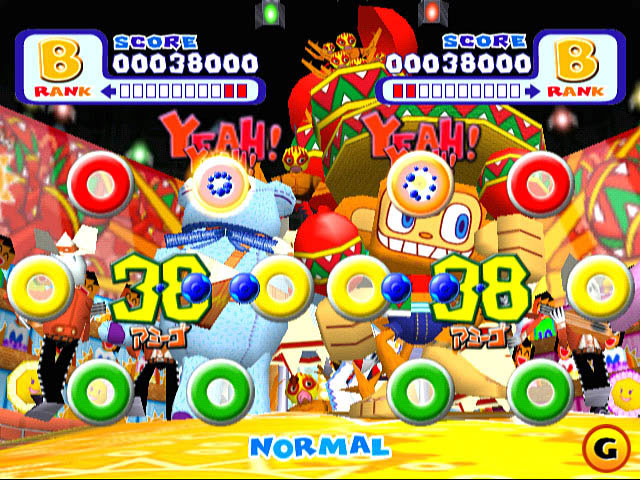
The action in Samba de Amigo was unique because it relied on not only your placement of the maracas, but also your timing. Floor sensors that came with the DC maracas could detect the distance between the maracas and the floor, which is how you got the game to recognize that the maracas were in one of six different onscreen zones. So rhythm wasn't all you needed, as you also had to keep track of where the maracas were at any given time. That added an interesting layer of complexity to the game, which helped keep it addictive. It didn't really make the game impossible, either.
The song list helped things along by sticking largely to Latin-themed songs, including the highly recognizable theme song, Samba de Janeiro. At the same time, the game did branch out into other territory, including songs like Chumbawamba's "Tubthumping," Reel Big Fish's cover of "Take On Me," and a few other tracks that you wouldn't really want to play maracas to. In a cool addition, the DC version could get online to download unlock-keys for additional tracks from other Sonic Team games, which let you play along with songs from After Burner, Burning Rangers, OutRun, Fantasy Zone, Sonic CD, Sonic R, and Nights.
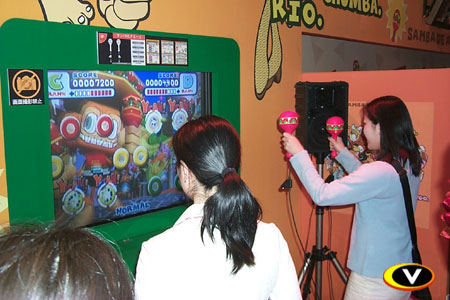
Graphically, there was a lot going on in Samba de Amigo, but like most rhythm games, the show was really only there for spectators. But it was a show nonetheless, chock-full of crazy-eyed cartoon monkeys with sombreros and a cast of other characters, which gave the game a unique visual style that really stood out.
Samba de Amigo spawned a sequel, which was also ported to the DC, but this version never made it to the US. It focused more on movement of the maracas instead of the timing of your shakes, which ended up revealing the limitations of the floor sensor. The original game was a great deal of fun, and it proved that you could put out a great, controller-based rhythm game, without the Konami name on it, and still attract an audience.
--Jeff Gerstmann, Senior Editor
Shake Your Groove Thing. Submit a Review of Samba de Amigo!

Ossu! Tatakae! Ouendan!, last year's pioneering rhythm game on the Nintendo DS, might never be released outside of Japan, a dire loss for international rhythm gamers. Fortunately, the DS is region-free, and the story in Ouendan is even better if you don't understand it. Though this game may be recent, the combination of its unique use of the DS touch screen, the humorous story, and the fantastic soundtrack make it an instant classic.
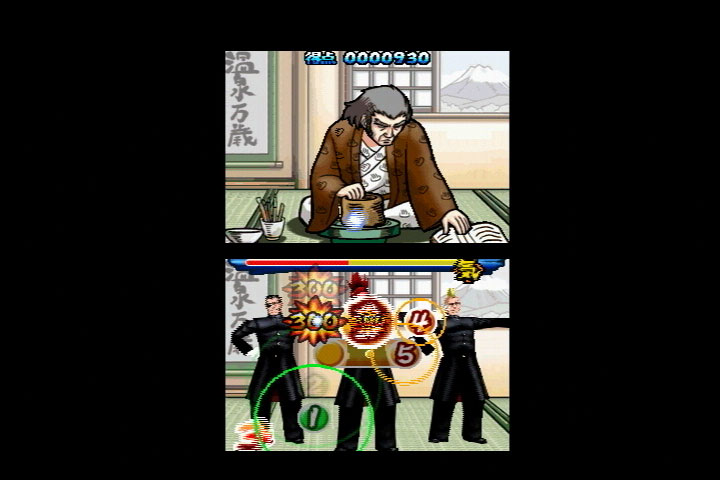
The title of the game roughly translates to "Go! Fight! Cheer Squad!" a reference to the fact that the protagonists are a trio of male cheerleaders who travel through the city using their positive message to brighten the lives of down-on-their-luck citizens. Each level begins with a character in a dilemma--a pottery master who has lost his inspiration (except, what seems to be Edvard Munch's The Scream), a timid secretary who's in love with her boss, a horse who has witnessed a robbery--and through the positive reinforcement of cheering, you can turn their lives around.
The story is narrated by a series of manga-style visuals that appear on the top screen of the DS, while you control the gameplay using the touch screen. While some releases on the platform use the touch pad only incidentally, controlling this game with the stylus is pivotal to the gameplay. Colored bubbles with numbers inside them appear, and around each bubble, a circle outline continually narrows around it. You must tap on the bubble at the exact instant the circle comes into alignment with it, which should time nicely with the music. Perfectly doing so ensures a successful outcome, a high point score, and the ability to go on and help other panicked citizens. Though the gameplay is simple to understand, it gets increasingly more difficult, and you'll encounter more-complicated methods of tapping out the music with the stylus. Though the act of following along with markers is standard rhythm game fare, the unique way it has been successfully integrated on the DS is what makes Ouendan exceptional.
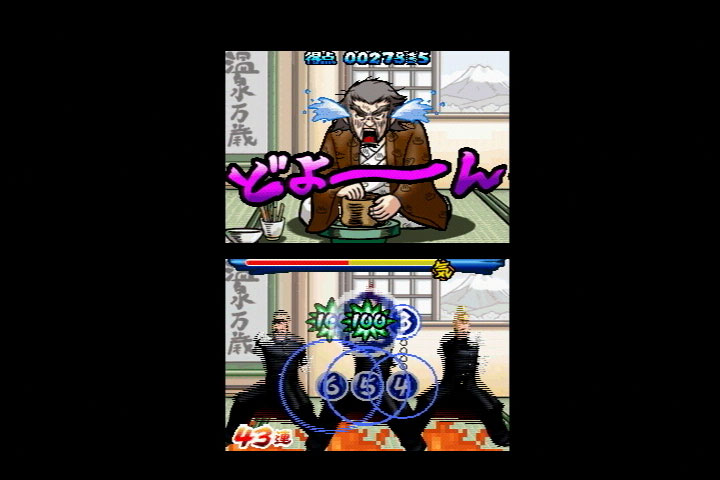
Of course, it takes more than mere mechanics to make a game outstanding. Ouendan has a measure of personality that most games (with the notable exception of PaRappa the Rapper) tend to lack. Though you might not ever get to know the cheerleaders personally, the juxtaposition of their stern appearance and their dedication to cheering makes them instantly lovable. And they're not only deliciously ironic, but effectively motivating as they burst onto the scene, ready to shout along with the music. Like every great rhythm game, Ouendan is accompanied by a stellar and catchy soundtrack that you'll find yourself singing along with, regardless of whether you understand a word of Japanese.
Few games since PaRappa have managed to capitalize on the spirit of what it did, but Ossu! Tatakae! Ouendan! is certainly one of them. With visual style, charming characters, a worthy soundtrack, and well-orchestrated gameplay, Ouendan truly earns its place among the ranks of the greatest rhythm games of all time.
--Carrie Gouskos, Features Editor
Bring It On. Submit a Review of Ossu! Tatakae! Ouendan!
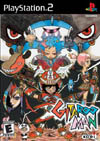
U-1 is an elementary school student with some self-esteem issues. He lets the overachieving Kazuya push him around, he can't get up the nerve to ask his classmate Pico out on a date, and his only friend is his talking dog, Puma. All that changes, though, when he discovers that within him resides the power of a great hero. Were this not a crazy Japanese rhythm game, this one would probably go on to be some lame superhero story. Luckily, U-1 is actually Gitaroo-Man, an intergalactic champion who battles his foes with the power of rock!
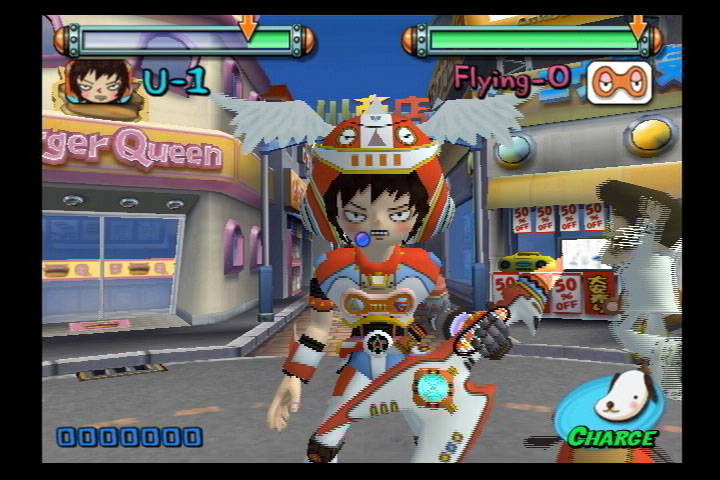
A kissing cousin of PaRappa the Rapper in more ways than one, Gitaroo-Man conveys a similarly feel-good, "believe in yourself" kind of message, which is wrapped up in a storyline that is more of a fever dream than a cohesive narrative. The whole thing is complemented by a unique rhythm mechanic. It seems that the evil alien race of Gravillians is making a bid for intergalactic supremacy, and it plans on doing so by collecting all of the gitaroos, ancient musical instruments of god-only-knows what kind of power. As the reluctant hero, you face a series of bizarre Gravillian warriors--Battle-of-the-Bands-style--in order to reclaim all of the gitaroos, save the universe, get the girl, believe in yourself, and so on. Despite being a somewhat awkward Japanese translation at times, Gitaroo-Man still has a surprising amount of emotional resonance, and it's hard not to get a little stirred up during some of the key moments later in the game.
Each opponent in your musical gauntlet rocked a different style of music, and each opponent was suitably bizarre. Your first encounter was with Panpeus, a little devil still in diapers, who used his axe gitaroo to slice through space and time to get right into your bedroom--he, of course, had a thing for fret-shredding heavy metal. After besting him, you faced off against Flying-O, a giant flying saucer that used the power of high-energy Japanese dance-pop to make people dance until they died. Next up was Mojo King Bee, a jazzy trumpet player wearing a bee suit, and then there was the giant hammerhead space-shark, and then, well, things just kept getting weirder from there. It's probably not accurate to call the music in Gitaroo-Man well rounded. But by going from a spaced-out reggae beat to an acoustic love ballad to a fevered salsa beat, it at least qualifies as eclectic.
While most rhythm games make the challenge a sort of metaphorical fight, in Gitaroo-Man you were literally using the power of rock as an offensive weapon, and the game had some interesting mechanics for the actual fight. When playing your gitaroo, you would use the left analog stick to follow a line that would snake around the screen, all the while tapping the circle button in time with cues that lay on top of the line. When your opponent came back at you, the gameplay would shift, and you would have to dodge attacks by tapping the controller's face buttons as they flew toward the center of the screen. It was an odd combination, but using the analog stick gave you the sense that you really were playing some alien musical instrument, and the patterns of your enemies' attacks became insanely intricate in later stages.
But even beyond its quirky premise, eclectic soundtrack, and unique gameplay mechanics, Gitaroo-Man's most striking feature was its art style. Though the visuals were all polygonal, its aesthetics were firmly rooted in an unusually arty, hand-drawn style. So, instead of giving characters facial details, everything was made to look drawn on. Though it certainly wouldn't be mistaken for your typical anime, there was a surreal playfulness to the art style in Gitaroo-Man. For example, although the game never acknowledged them, there was a nameless backup band that followed Gitaroo-Man through the cosmos, and they were inexplicably dressed up in animal suits.
Gitaroo-Man was a boldly unique endeavor upon its release, and there's still nothing quite like it. Though it may not have had the impact of some of the other games on this list, Gitaroo-Man had a cohesive and uncompromising vision that still holds up today.
--Ryan Davis, Associate Editor
He gave me this Gitaroo. Give Us Your Review of Gitaroo-Man!

Long before rhythm games became synonymous with dance pad controllers and colorful, plastic musical instruments--whether they be drums, maracas, guitars, turntables, or whatever--NanaOn-Sha's vib-ribbon was boldly going where no rhythm game had ever gone before...without the need for any such bells and whistles. Vib-ribbon's charming vector graphics were never much to look at, but its uncomplicated gameplay is deceptively challenging, and it really doesn't matter what you think of the catchy, J-pop soundtrack since you can play along to any CD in your music collection.
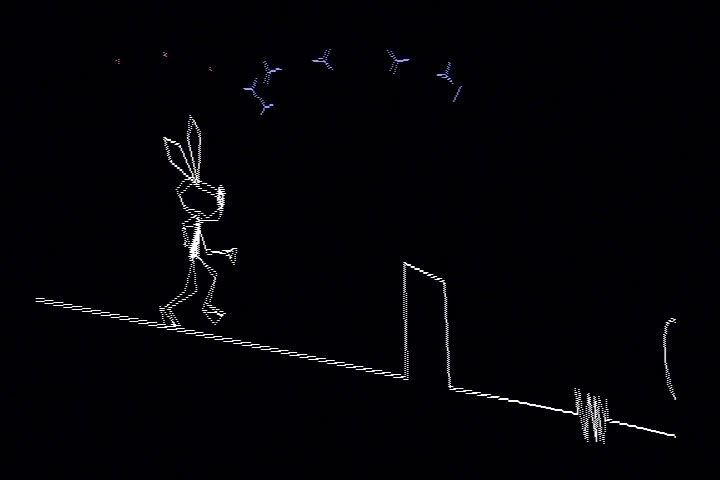
In vib-ribbon, which sadly never got a North American release, you assume the role of a wire-frame rabbit named Vibri, whose goal on every music-track generated level is simply to run from left to right along a shaky white line littered with obstacles. Each of the four obstacle shapes--blocks, loops, crevices, and jagged lines--can be negotiated by pressing a different face button, shoulder button, or directional button at exactly the right time, causing Vibri to dance, leapfrog, or step over the obstruction. Levels are rarely quite as simple as that, though, thanks to constantly changing camera angles, obstacles moving along the line at different speeds, and hybrid obstacles.
Hybrid obstacles are formed when two shapes combine to form one, and the resulting forms can only be passed successfully by pressing the two buttons corresponding to the "donor" shapes simultaneously. To bypass a loop that looks like it has a spike on top of it, for example, you'd have to press both the loop and crevice buttons--assuming you'd figured out that the spike was an inverted crevice. Working out which hybrid shapes were composed from which basic shapes might not sound like much of a challenge, particularly given the limited number of variants, but in the middle of a challenging or fast-moving game, you can bet that mistakes will happen.
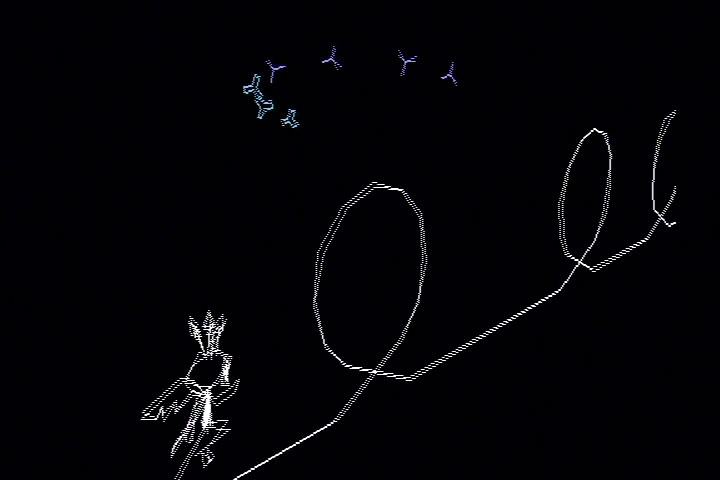
While stringing together a combo of successful moves will see Vibri the rabbit evolve into some kind of super-rabbit-prince with wings and a crown, mistakes are punished through Vibri's devolution into a frog and, ultimately, some kind of worm with a square for a head. The different character forms aren't purely for aesthetic amusement, since their respective animations are different enough that it makes it quite challenging to get used to the timing of obstacles in a form to which you're not accustomed.
NanaOn-Sha's own Parappa the Rapper aside, there are very few rhythm games that boast the charm or the simplicity of vib-ribbon, and there are even fewer that can legitimately be described as works of art. Perhaps the biggest compliment that one can pay to vib-ribbon is that, unlike the vast majority of games, it is timeless. The visuals made no attempt to be cutting-edge when the game was released and so show no sign of aging, the gameplay can literally be enjoyed by anyone, and new levels for the game are still being made available for purchase in music stores all over the world each and every day.
--Justin Calvert, Editor
Good Vib-rations. Submit a Review of vib-ribbon!
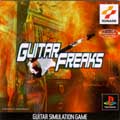
What happens when you take the Beatmania format and apply it to a guitar? That's the question answered by Konami's Guitar Freaks series. The same basic format as Konami's other games applies here, too. Notes scroll up to the top of the screen, and you have to play the notes when they meet up with a timing line. But the difference between Guitar Freaks and Beatmania is that you hold down the notes and then strum them using a guitar controller, rather than just mashing out the notes like a piano.
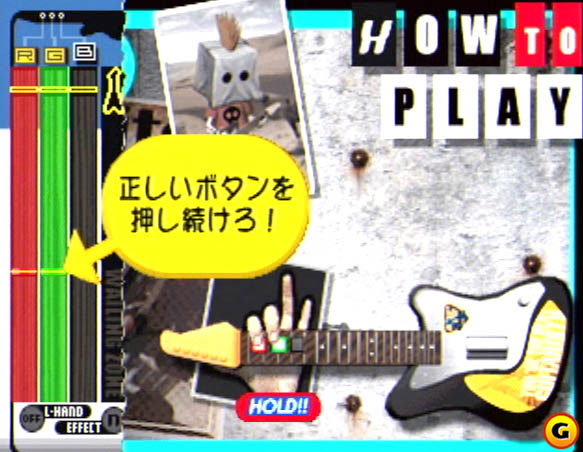
The introduction of a guitar controller makes for some silly fun, as the temptation to "get into it" seems to be much higher here than it is with many other games in the genre. Part of that is helped along by an extra function in the guitar controller that triggers when you tilt the guitar upward. The game uses this feature to accent specific notes and generally mark the end of a phrase.
A big part of the fun in Guitar Freaks is its over-the-top song list. Later versions of the arcade game got more and more into providing cover songs, but at its purest, you're rocking out to decidedly Japanese takes on rock, blues, metal, and ska. Songs like "Happy Man" and "Ska Ska No. 1" helped define the Guitar Freaks games as completely different animals than stuff like Beatmania and Dance Dance Revolution, which focused more on dance-friendly music.
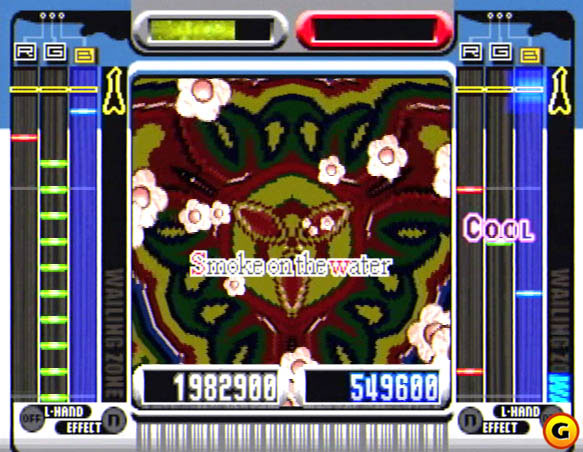
While the early installments in the series contained most of the best original songs, later installments got larger song lists. The arcade version also gained the ability to link up to DrumMania machines, allowing for two guitarists and a drummer to play the same song. That ability carried over to the PlayStation 2 Guitar Freaks games, though the PS2 drum controller was sort of lame.
Everyone may be all up in arms about how amazing Guitar Hero is these days, but don't forget that this style of gameplay started with three buttons and a strum bar back on the PS.
--Jeff Gerstmann, Senior Editor
Get freaky. Submit a Review of Guitar Freaks!
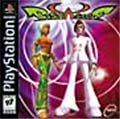
Though naming confusion can be responsible for Bust-A-Groove's obscurity (its title was changed from the Japanese version because Bust-A-Move was already the name of the North American release of Puzzle Bobble), any ambiguity is unearned. Expanding upon the leaps and bounds taken by PaRappa the Rapper, Bust-A-Groove combines rhythmic elements and battling, as you attempt to out-dance competitors by executing moves along with the music. What makes Bust-A-Groove particularly interesting is that unlike other rhythm games, even now, there is a certain element of freedom allowing you not only to time many of your button-presses at will, but also to choose between several paths along the way. The combination of appealing visuals, accentuated by unique dance styles, interesting rhythm gameplay, and a catchy soundtrack, make Bust-A-Groove truly one of the 10 greatest rhythm games released.
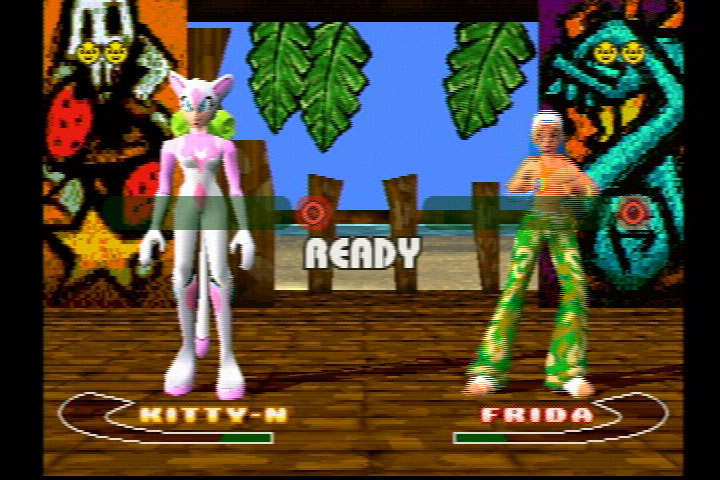
The story is minimal in Bust-A-Groove, but even in its light implementation, you get a good idea of each of the different character's personality. This is furthered by their unique dance styles, which include different forms of hip-hop, voguing, and raving. The goal of the game is to beat your one other opponent--you'll be able to tell how well you're doing by the camera's focus, which will all but completely cut out the other character if she/he is losing badly enough.
In order to dance, you have the length of four beats to input directional buttons before pressing one of the two buttons to execute the move. The directions can be tapped out with any timing whatsoever, but the final button must coincide perfectly with the fourth beat. In this way, the game mimics a simple drumming mechanic by requiring a set rhythm to keep the time with one hand, while allowing some variation in the other. As you play, successful hits will earn you the chance to perform increasingly difficult maneuvers, and you'll get the opportunity to choose between two patterns, depending on how comfortable you are with their respective difficulty levels. At any time, you're also able to hit an alternate button on the fourth beat, which will either send an attack over toward your opponent or block an attack coming your way. These nuances, although slight, give an added dynamic to the game--you're looking to not only properly maintain a rhythm sequence, but also keep a leg up on your opponent.

A great rhythm game is only as good as its soundtrack, and this is where Bust-A-Groove particularly shines. The different characters' dance styles and environments are matched by a variety of music themes--from the J-pop sounds of Kitty-N to the house beats of Gas-O. Few rhythm games have so effortlessly infused so many different types of music and dance genres together without destroying the cohesiveness of the game. With a stellar multiplayer mode, some great unlockable characters (like the capoeira aliens), and simplistically entertaining gameplay, Bust-A-Groove delivers all the basic needs of a great rhythm game, and then some.
--Carrie Gouskos, Features Editor
Bust-a-Review. Submit a Review of Bust-a-Groove!
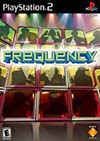
When Harmonix Music first blossomed out of a computer music group at MIT in 1995, it wasn't for the purpose of making video games; rather, it was for making it possible for nonmusicians to experience the joy of actually making music. It makes sense, then, that the most significant defining characteristic of Frequency, Harmonix's first rhythm game, was its unique philosophical perspective on the relationship between the music and the game.
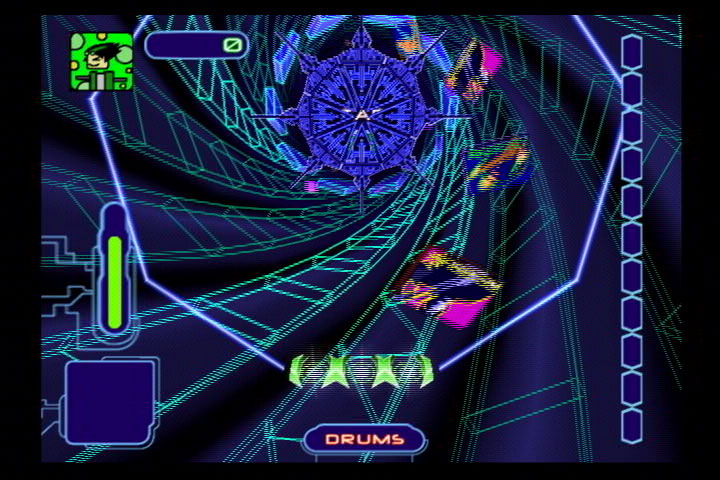
Rather than just making you a slave to the beat, where you were rewarded for rote memorization and punished for mistakes, Frequency involved you in the process of creating music--a marked difference from the way Japanese rhythm games had handled music up to that point. The game would put you on the inside of an octagonal tunnel, and each side of the tunnel represented a different element of the song that you were going to "play"--be it vocals, guitars, synthesizers, or drums. Each side was covered in gems that corresponded to the buttons on your controller. If you played the sequence correctly, you would hear the instrument in question--play it for long enough and it would start playing on its own, freeing you up to move on to another element of the song. Even though you were playing with scripted patterns, Frequency gave you a sense of creative control. And if that wasn't enough, the game also included a remix mode, which gave a surprising amount of freedom to would-be producers. It almost made the Dual Shock 2 controller feel like a musical instrument in and of itself.
Frequency was also the first rhythm game to place the focus on licensed popular music. Up until then, rhythm game soundtracks were populated almost exclusively with music recorded specifically for the game in question, making the rhythm genre all the more impenetrable to those without a taste for Japanese pop culture. By including recognizable artists and songs, Frequency made the genre more accessible to American audiences and added weight to the gameplay--it's one thing to hear a song that you know playing in the background of a game, it's another thing entirely when you're taking an active role in how that song comes together. With access to artists signed to the Sony music label, Frequency cherry-picked songs by some of the best and brightest electronic-dance-music artists of the time, including BT, The Crystal Method, Meat Beat Manifesto, Orbital, and Paul Oakenfold. Harmonix also used Frequency as a platform for some internal music projects, most notably the indie electro-pop trio Freezepop, which has since appeared in nearly every game developed by Harmonix.

Harmonix coupled its broad collection of dance music with a hyperstylized techno-futuristic visual style that screamed cyberspace. The wire-frame tunnel that you flew down was planked with alien circuitry and crackled with glowing energy. Meanwhile, outside the sound tube lay an abstract landscape of polygons, video screens, and Day-Glo raver art (imagine Tron in a dance club, and you're halfway there). It was a vibrant look that complemented the rest of the package almost perfectly. With its confluence of thoughtful, inclusive game design, killer licensed music, and strikingly unique visual style, Frequency brought some American style to the distinctly Japanese genre of rhythm games, and the result still stands as one of the best rhythm games ever.
--Ryan Davis, Associate Editor
Laying Tracks. Submit a Review of Frequency!
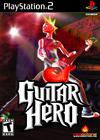
Just when you thought that there were no heroes left in the rhythm game genre, along comes a feat of guitar heroism so bold, so beautiful, so utterly rocking that it turned the entire genre on its head and made it (dare we say it?) accessible. Guitar Hero's release in late 2005 was an out-of-left-field success if there ever was one. Here was an upstart publisher in RedOctane, previously known only for churning out knockoffs of Konami's various rhythm game staples, trying to bring its own version of Guitar Freaks to the US market. Guitar Freaks never came out in North America, and perhaps with reason. It's a tough sell to get people to pay extra money for a peripheral controller that will probably be useful for only one or two games in their lifetime, let alone one with such inaccessible Japanese music as what Guitar Freaks offered. To the hardcore that previously imported Guitar Freaks, Guitar Hero must've looked like a lousy knockoff of the game they already fell in love with years ago on the PS. To everyone else, it must've just looked weird and unwieldy. So how on earth did it succeed?
Two very distinct, and very excellent, things set Guitar Hero apart. One, it was developed by Harmonix, the brains behind classic PS2 rhythm titles like Amplitude and Frequency. Taking the same sort of onscreen display used in those previous titles, Harmonix tuned the gameplay wonderfully to mesh with the crazy guitar controller used for the game. Harmonix's previous works had all revolved around the four trigger buttons on the PS2 controller. Here, the developer took this crazy guitar, with its color-coded fret buttons and a main strum button, and broke down every single note from some of the great rock-and-roll numbers of the last 40 years, thus turning each song into a rhythmic puzzle of epic proportions.
The other thing that Guitar Hero did right was its music. Whereas Guitar Freaks settled into its groove with purely esoteric Japanese pop, Guitar Hero is as American as a pick-up truck painted in red, white, and blue. You start to look over the track list, and it immediately makes sense. Ozzy Osbourne? Check. Motörhead? Excellent. Judas Priest? Delightful. Jimi Hendrix? You got it. But then, it starts to get a little weird. Sum 41? The Donnas? Incubus? Sure, these are some good, solid rock songs, but do they really stand up against the measure of Jake E. Lee's fiendishly evil solo in Bark at the Moon? Or Clapton's deftly nimble work in Crossroads? Once you pop the game in and start playing all these songs, though, it starts to make sense. The mixtures of note-heavy solos, fast chord strumming, and copious amounts of whammy bar spread throughout the game's set list creates a great variety of tunes and play styles.
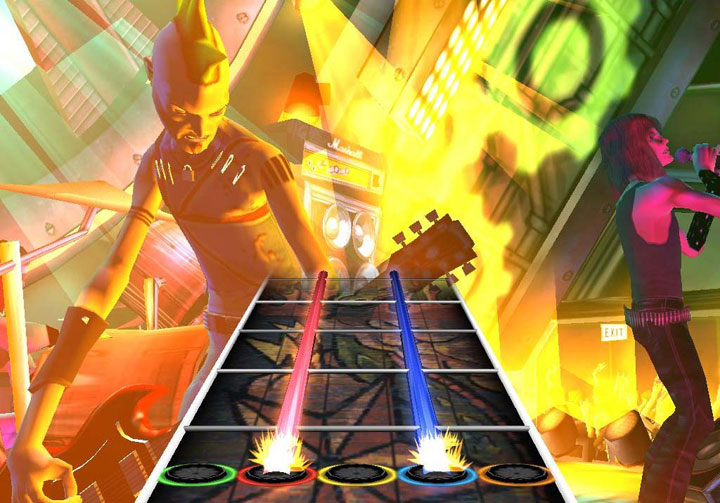
It's also worth mentioning that Guitar Hero has some of the most accurate cover songs of any rhythm game out there. The game does have a number of original songs included, but none of them are the main draw songs; rather, it's a bunch of unsigned artists and bands that RedOctane and Harmonix employees are in (including longtime Harmonix game mainstay, Freezepop). All the main tunes are played by studio musicians, and though these versions are imperfect (as it is with any cover song), the attention to detail, especially in the guitar tracks, is really something to behold.
It's fair to say that Guitar Hero really rejuvenated the rhythm genre upon its arrival. Awash in a sea of DDR clones and sequels, the genre as a whole was slowly dying a painful death, that is, until a hero of rocking proportions flew onto the scene and rescued it from obsolescence. Guitar Hero is the kind of game that could make the most conservative of folk throw up the devil horns with tongue flailing and head banging in excitement. For that feat alone, it deserves to be ranked with the biggest and best the rhythm genre has ever seen.
--Alex Navarro, Associate Editor
Rock out with your...review. Submit a Review of Guitar Hero!

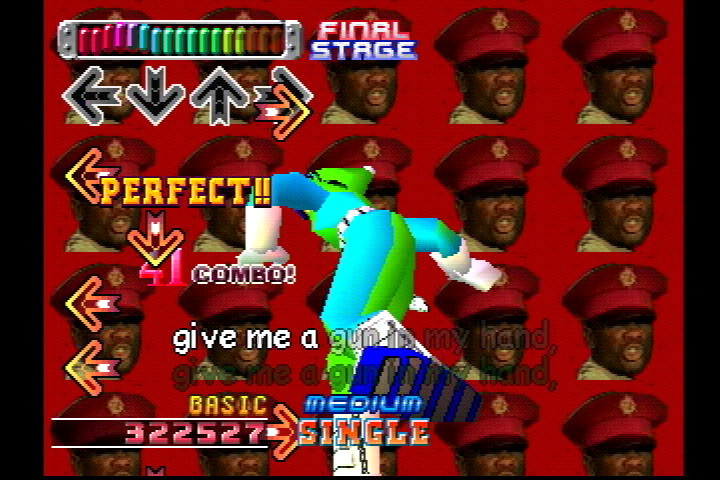
Dance Dance Revolution is the flagship rhythm game franchise, but it has effectively become larger than the genre itself. From a once arcade-centric Japanese game, DDR has evolved into a fantastically popular franchise the world over, a pioneer in the good-video-game health movement, and a centerpiece for the latest Madonna music video. Though the entire series is responsible for the success of the game today, it's particularly the 3rd Mix that set up the most important foundations for the gameplay, and popularized many of the notorious DDR songs and artists.
Something should be said about the emergence of DDR as a whole, since the game has come to typify everything that the rhythm genre offers. There's a peripheral, there's a variety of songs, and there's a difficulty level that ranges from simple to impossibly hard. While the game holds great appeal for small (yet coordinated) children, it also provides challenge to the fiercest competitors, and this wide range of appeal has helped it to breathe its life into the dying arcade scene in North America. Finding some sort of niche with every gaming and non-gaming group on the market, DDR is so much greater than the sum of its parts (although they're pretty great, too).

The 3rd Mix never made it outside of Japan, but its legendary song list has been the stuff of every DDR since. Most notoriously, it features the higher beats-per-minute versions of DDR staples like Boom Boom Dollar and Butterfly, songs which have become synonymous with DDR gameplay. New songs like Afronova, and an outstanding number of tunes from DDR-great Captain Jack, continued to further diversify the list. Though some Japanese-based rhythm games lose appeal with too niche of a soundtrack, DDR 3rd Mix's anthems are universally catchy, and many of them fall more along the lines of good old-fashioned house than J-pop (although there's a fair share of the latter, as well). It was 3rd Mix that also expanded upon the length of the song list, ensuring that anyone who wanted to get their dance on was able to.
Though the difficulty levels in 3rd Mix were unchanged from the previous versions of the game, there was a new addition, in the form of nonstop mode, which effectively ramped up the challenge even further simply by not giving a player any breaks between songs. Of course, since the time of 3rd Mix's release, DDR has evolved that much more--perhaps most substantially with the 6th Mix and its addition of freeze arrows and other gameplay variations. But the 3rd Mix best typifies what makes the series so revolutionary, yet so classically entertaining at the same time.
--Carrie Gouskos, Features Editor
Viva la Revolution! Submit a Review of DDR 3rd Mix!
Got a news tip or want to contact us directly? Email news@gamespot.com

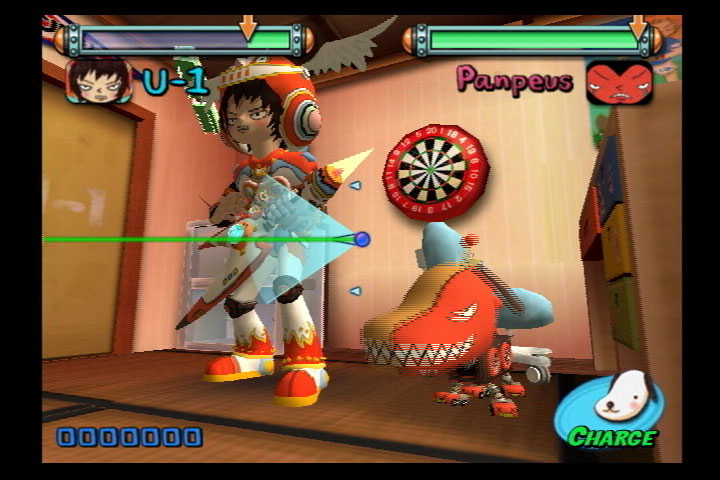

Join the conversation